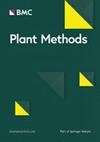Advancing virus-induced gene silencing in sunflower: key factors of VIGS spreading and a novel simple protocol
IF 4.7
2区 生物学
Q1 BIOCHEMICAL RESEARCH METHODS
引用次数: 0
Abstract
Virus-Induced Gene Silencing (VIGS) is a versatile tool in plant science, yet its application to non-model species like sunflower demands extensive optimization due to transformation challenges. In this study, we aimed to elucidate the factors that significantly affect the efficiency of Agrobacterium-VIGS in sunflowers. After testing a number of approaches, we concluded that the seed vacuum technique followed by 6 h of co-cultivation produced the most efficient VIGS results. Genotype-dependency analysis revealed varying infection percentages (62–91%) and silencing symptom spreading in different sunflower genotypes. Additionally, we explored the mobility of tobacco rattle virus (TRV) and phenotypic silencing manifestation (photo-bleaching) across different tissues and regions of VIGS-infected sunflower plants. We showed the presence of TRV is not necessarily limited to tissues with observable silencing events. Finally, time-lapse observation demonstrated a more active spreading of the photo-bleached spots in young tissues compared to mature ones. This study not only offers a robust VIGS protocol for sunflowers but also provides valuable insights into genotype-dependent responses and the dynamic nature of silencing events, shedding light on TRV mobility across different plant tissues.推进向日葵中的病毒诱导基因沉默:VIGS 传播的关键因素和新型简易方案
病毒诱导基因沉默(VIGS)是植物科学中的一种多功能工具,但由于转化方面的挑战,其在向日葵等非模式物种中的应用需要广泛的优化。在这项研究中,我们旨在阐明对向日葵中农杆菌-VIGS 的效率产生重大影响的因素。在测试了多种方法后,我们得出结论:种子真空技术和 6 小时的共培养产生了最有效的 VIGS 结果。基因型依赖性分析表明,不同向日葵基因型的感染率(62-91%)和沉默症状扩散情况各不相同。此外,我们还探究了烟草鼠疫病毒(TRV)的流动性和表型沉默表现(光漂白)在 VIGS 感染向日葵植株的不同组织和区域中的表现。我们发现,TRV 的存在并不一定局限于可观察到沉默事件的组织。最后,延时观察表明,与成熟组织相比,光漂白斑点在幼嫩组织中的扩散更为活跃。这项研究不仅为向日葵提供了一种可靠的 VIGS 方案,还为基因型依赖性反应和沉默事件的动态性质提供了宝贵的见解,并揭示了 TRV 在不同植物组织中的流动性。
本文章由计算机程序翻译,如有差异,请以英文原文为准。
求助全文
约1分钟内获得全文
求助全文
来源期刊

Plant Methods
生物-植物科学
CiteScore
9.20
自引率
3.90%
发文量
121
审稿时长
2 months
期刊介绍:
Plant Methods is an open access, peer-reviewed, online journal for the plant research community that encompasses all aspects of technological innovation in the plant sciences.
There is no doubt that we have entered an exciting new era in plant biology. The completion of the Arabidopsis genome sequence, and the rapid progress being made in other plant genomics projects are providing unparalleled opportunities for progress in all areas of plant science. Nevertheless, enormous challenges lie ahead if we are to understand the function of every gene in the genome, and how the individual parts work together to make the whole organism. Achieving these goals will require an unprecedented collaborative effort, combining high-throughput, system-wide technologies with more focused approaches that integrate traditional disciplines such as cell biology, biochemistry and molecular genetics.
Technological innovation is probably the most important catalyst for progress in any scientific discipline. Plant Methods’ goal is to stimulate the development and adoption of new and improved techniques and research tools and, where appropriate, to promote consistency of methodologies for better integration of data from different laboratories.
 求助内容:
求助内容: 应助结果提醒方式:
应助结果提醒方式:


